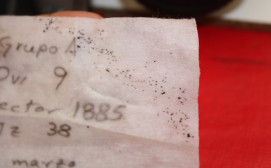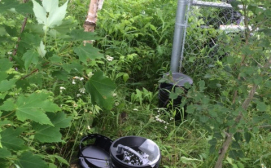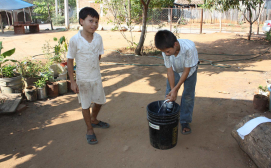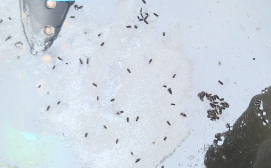Project Lead(s): Gerard Ulibarri
Issue
There is increasing concern about mosquito-borne diseases and their rapid spread in vulnerable populations, amplified by the outbreaks of Zika virus in Latin America.
Several methods have been employed for detecting the presence of mosquitoes in the field, but none have proven perfect. Standard ovitraps to monitor Aedes mosquitoes are large, one-litre black buckets filled with plain water or attractant solutions, along with a wooden strip or porous pellon paper (a tissue typically used on the back of furniture to prevent dust) on which the mosquito lands and lays its eggs.
Solution
The project implemented a three-component, integrated intervention in a community in Guatemala, consisting of:
· Web-based training of local health personnel in vector control
· Comparing ecological or standard ovitraps to capture Aedes aegypti and/or Aedes albopictus mosquito eggs
· Community engagement to promote participation of community members and health personnel in the understanding and maintenance of ovitraps for mosquito control.
The project team developed an ecological ovitrap from recycled tires (ovillanta) and compared this device to the standard ovitraps. Eighty-four of each type of trap were used in the study.
Two litres of the attractant solution were placed on the ovillanta, while the standard ovitraps (controls) received one litre of clean well water.
Each of the ecological ovitraps contained two landing strips – one on each end of the apparatus – using 15 x 10cm pieces of pellon paper.
Qualitative data via interview was collected to understand perceptions, social participation, usefulness of strategies for control and prevention of the diseases, negative and positive factors of the control program and recommendations for future strategies.
Outcome
The intervention proved beneficial to this remote community at risk of mosquito-borne diseases (such as dengue, chikungunya and Zika).
Eighty percent of the 25 local health personnel enrolled in the training program received accreditation of their improved knowledge of vector control, which improved their performance and efficiency with handling cases in the community.
Significantly more eggs were trapped by the ovillanta than standard ovitraps over the 10-month study period.
Among both community members and health workers, the levels of knowledge, interest and participation in community mosquito control and trapping increased.
The results have been published in F1000Research.
The researchers intend to scale the project by undertaking the following activities:
1) Ensuring the entire area of Sayaxche and surroundings is adequately covered with ovillanta.
2) Expanding use of these traps to other cities.
3) Creating a cushion zone between Central America and Mexico by expanding to border towns between Guatemala and Mexico, including the larger city of Tapachula.
4) Expanding use of the ovillanta to the whole of Latin America, with participation from local Ministries of Health and community volunteers.




